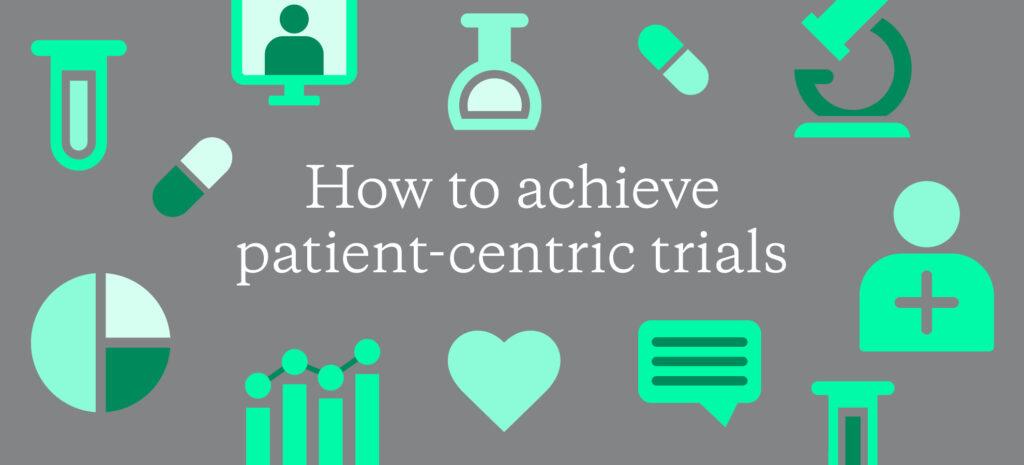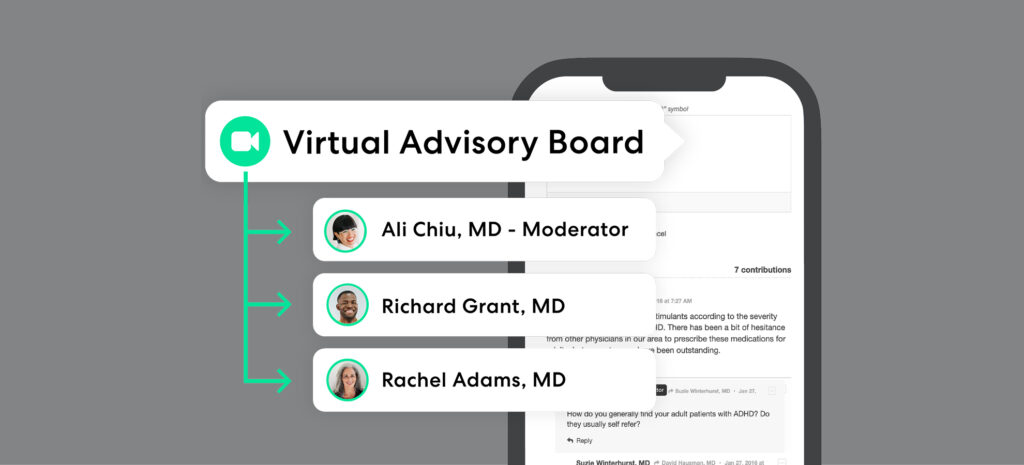More life science companies are choosing to strengthen their commitment to patient centricity. Data supports the idea that centering patients and their experiences are a good choice for both altruistic and business reasons alike, including within the clinical trial space. Now – in a time when clinical research has never been more expensive or complex – pharma and medical device organizations are renewing their focus on personalized medicine, patient empowerment, and drug development with more patient-centric trials.
What does patient centricity mean for clinical trials?
Research suggests that putting patients at the center of trial activities leads to greater success. In one study comparing trials with significant patient-centered elements to traditional trials, researchers found that 87% of the patient-centered trials had positive results, much higher than 68% for the traditional trials. And companies that take more patient-centric approaches to trial design and execution have reduced average trial enrollment time and shortened the timeline from first patient dose to product launch.
Companies today are more open and do not view patients as mere “subjects” who generate data, but as informed collaborators whose participation is “core” to the overall success of trials leading to the emergence of the concept of “patient-centric trials.” – National Center for Biotechnology Information
Many life science organizations may believe they are already patient-centric because they develop and launch devices and therapies designed to treat patients. However, as a Deloitte report points out, these patient perspectives are often viewed through the lens of physicians or regulators. Designing trials with patients in mind doesn’t have the same effect as bringing the patient into the process from the beginning.
What are some barriers to patient-centric trials?
Like every other aspect of healthcare delivery, clinical research is impacted by disparities driven by social and economic inequities. These drivers are complex, inter-related, and in recent years have moved health systems, patient advocacy groups, and life science companies to create more patient-focused programs that work to reduce such barriers, which include:
- Economic stability
- Location and physical environment
- Education
- Food security and access to nourishing food
- Community, safety, and social context
- Health coverage, access to providers and pharmacies, and quality of care
How does patient centricity apply to patient enrollment for trials?
To correct the disparity in clinical trial enrollment and participation, a patient-centric approach can help pharmaceutical organizations make clinical studies more accessible and equitable to a variety of patients around the world. Specific challenges facing medical research teams in working toward a more diverse clinical trial design include:
- Logistical and financial barriers for patients in marginalized communities or underrepresented patient population
- Lack of patient engagement with minority communities and too few minority clinical investigators who trial participants may be more likely to relate to and trust
- Language and cultural barriers
- Trials held in the same locations (near large hospitals, academic centers, and professional for-profit clinical trial units) that are too far for some patients to travel
When a clinical trial is conducted, clinicians and patients collaborate with the sponsor to the safety and effectiveness of a drug or device under experimental treatment. Trials are designed around the feasibility and ease with which the sponsor can conduct the study, and this can lead to a number of costly and complex trials that don’t actually address patient needs. So while spending on trial design and execution has grown, patient needs are still not being met. Thus, patient-centric drug development is now becoming the model that the industry is following.
How to adopt a patient-centric model in clinical trials
Today, patients are more technologically informed – driving the change in mindset and the way clinical trials are being approached and conducted. More life science companies are building their patient-centric strategies around technology that meets patient needs and provides a wealth of information that can be used in clinical research.
The paradigm shift that we see in the way clinical research is evolving is attributed to a very large extent to technology and its widespread access to the public. – National Center for Biotechnology Information
Technology enables clinical research in many ways that are accessible and convenient for patients, including:
- Wearable monitors and sensors that can provide a measurement of respiratory rate, skin temperature, heart rate, physical activity, and other patient data
- Web-based applications that collect symptom information
- Online tools that help patients find and enroll in clinical trials
- Social listening technology that monitors public online conversations and helps pharma companies understand what patients are discussing around the world
- Virtual engagement platforms where pharma companies can conduct patient advisory boards to understand their day-to-day experiences with various health conditions
Virtual clinical trials – accelerated by the COVID-19 pandemic – are one way that trial sponsors will offer the trial participant increased convenience in the hopes of sustaining participation until the trial concludes. In traditional trials, patients may be required to drive to an investigation site once every few weeks. The trial participant may not live nearby or might rely on public transit subject to schedule changes or weather delays. Patients also have work and family commitments, health issues, or other factors that may make this schedule difficult, putting them at risk for dropping out of the study. In other cases, life science teams may simply be reluctant to prioritize direct patient engagement due to compliance and industry regulations.
Beyond offering more convenience for physicians, patients, and other stakeholders, virtual clinical trials provide other benefits for clinical teams:
Higher volume and quality of insights
Without scheduling challenges or logistical concerns, trial sponsors can collect more patient input, resulting in more valuable decision-making data and a more complete view of critical issues.
Strong patient focus
Life science teams are increasingly adopting a patient-centric approach and strengthening relationships with patient advocacy groups, clinicians, and health plans. By making it easier to engage patients without requiring travel and in a way that protects and ensures their privacy, life science organizations can be true to their patient-centric goals and harness valuable patient insights streams.
Increased diversity and inclusion
Asynchronous engagement can take place on readily available consumer devices like smartphones and tablets, providing an opportunity for all trial participants to contribute equally. By providing equal time to all, clinical teams receive more holistic input for more informed decision-making.
Engaging patients via a virtual platform eliminates many roadblocks that would otherwise negatively impact engagement efforts. An asynchronous environment means patients can participate in online discussions or periodic check-ins on their own schedule, without traveling. The ability to stay anonymous, answer private questions, and provide completely candid feedback without disclosing personal medical or identification information protects patients and life science teams from a compliance standpoint.
To build a truly patient-centric culture and strengthen the patient-centric clinical trial design, clinical teams must consider a more tech-enabled approach that puts trial participation within reach for more patients from different backgrounds, no matter where they live.
The future seems to be bright where pharma and patients have the potential to work symbiotically that could result in better research…improved health care and profits. – NCBI
Exploring ways to strengthen your patient engagement strategy? Learn how patient-focused drug development supports patient centricity.






